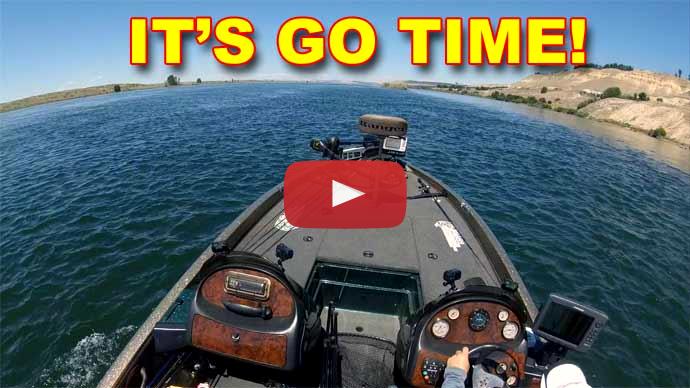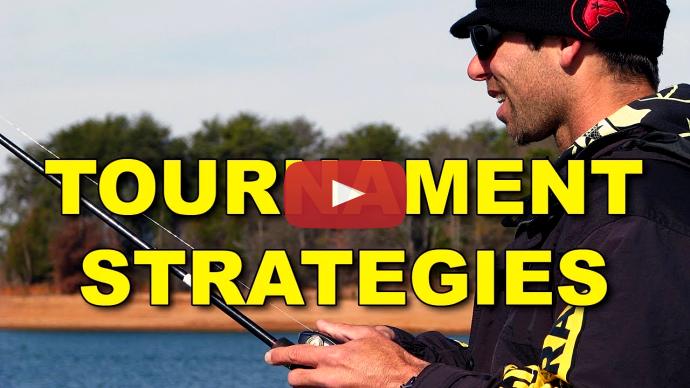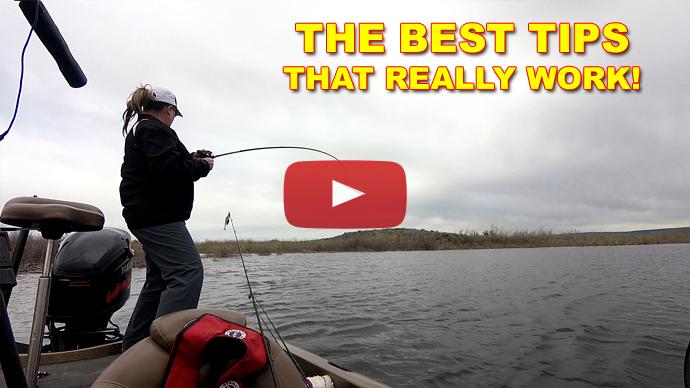Hey guys, Drew Cook here with BassResource and I'm going to talk about how I tackle fall events. You know, doing what we do, we don't really get to fish in the fall a lot, but COVID, you know, 2020, we had a whole season in the fall pretty much. And I love fishing in the fall, but there's a couple things that I'm going to tell you that will help as you go to fish your fall tournaments. It's a lot of championships for your local team trails and stuff that's going to be in the fall. And one thing that you need to know is it's going to be tough.
Just accept the fact and that's what I love because whenever you're at one of those fall tough, grinding tournaments, if there's 100 boats in it, 50 of them have already accepted defeat. Like mentally, they're out of it. So you are only fishing against 50 now. And that's something that I've always done. Just look forward to the ones that are really a struggle, a grind. You just got to keep your head in it and just stay focused because you're only going to get so many bites that you really need to be focused whenever you do get one because you don't want to miss it. You don't want to lose it because you're probably not going to get another opportunity.
I fish a lot of fall tournaments on grass lakes and that's probably my favorite, favorite fall time tournament is on grass lakes because, you know, you, the way I do it is, you know, I find an area of the lake that I like and just go to flipping. You know, main river, main lake stuff, and just go. I'm flipping every eight feet, my trolling motor's on seven, I'm covering water. Put it down, mark every bite you get, and a lot of times whenever you zoom out and look at the big picture, say you fished three miles, there's a quarter mile little stretch where I got five bites. Sure, I got two more bites on each side, but they're just spread out random fish. That's where your little juice is going to be, and you're just going to go back and forth and back and forth in there and be able to grind out a really good limit.
Another thing in the fall is you got to look at some of those offshore places because there's still going to be fish out there. You got to keep those honest, but whenever you do find them on those offshore places in the fall, you got to get really, really finesse-y with them. You're not going to pull up there and throw a big crankbait and just bail them for 20 minutes. You're going to be pulling up there throwing a Neko rig or a drop shot, Ned rig, things like that that are super finesse-y, little ball head swim baits, things like that.
Another thing in the fall is your bait is going to be smaller. You'll still be able to find at home a lot of fish school in the fall, but typically the big ones don't really school, but you'll have a bunch of, say, nicer ones. So if you have a place where they're schooling, a point or something like that, it's good to start your morning off with that and then go flip and frog for the rest of the day if you're on a grass lake.
If not, no grass lakes, you're going to really just kind of fish what's around where they're...the baits move into the back of the creek, but a lot of times whenever you have these tournaments in the fall, these fall tournaments, it's like the end of dog days of summer and every once in a few days you get a cool night. That's fall. So it's still super tough, but they know the days are getting shorter and things like that, so the fish know and it just kind of puts them in a really funny place. But everything's moving to the back of the creek, the shad are, and you're going to have to get small and find things back in the creek. You know, whenever you're doing that, you're still not gonna get that many bites. Throwing a topwater is another really good thing in the fall.
Probably the main thing in the fall, if you can, say you're like a Lake Douglas or something like that, you can get in that river, get in that running water, you're going to have a lot more success than in the, not stagnant, but the non-moving lake. They're more apt to bite whenever they get in that moving water. Or like a Lake Seminole, running up the Flint in the fall is going to get you more bites and be able to catch more fish because it's just so tough and everything in the lake.
But whenever you get that flipping bite or whatever in the grass, I've seen it many of times where there's actually, they call it a stroke, where you flip into the same hole that you just pulled one out of and you catch multiple fish and say you keep going down and whenever you come back, you catch another one right there in the same place that you just flipped in.
I remember the first real money championship that we won on Lake Guntersville, we had found some fish and it was really tough. Fall, October, still really hot, not very cool at nights, just really tough altogether. We had found some fish and for whatever reason, I guess we... It got a little cool the night before the tournament or the night of the first day of the tournament and we're flipping the outside edge of the hydrilla and not really getting any bites. One fish blew up probably 15 feet in the grass where the cheese mat goes from grass to the cheese mat that's, say, yellow and then it turns to orange. What it was is it was where the actual hydrilla quit growing. It was matted all the way over but the hydrilla quit growing because it had killed itself out and they were right there on that edge and once we found that out, we were catching them really good but flipping way in there. We weren't biting a frog but flipping way back in there and getting them to bite it.
Another thing on a grass lake to not get sucked into is the small shad that'll be in the grass and you'll see fish blowing up on them. They're so keyed in to that little bait that you can't throw a frog to be able to get them to bite. They're only going to eat that little stuff and it's super erratic. You can barely get one to bite. When you do, it's because you're skipping something really fast through there and they just see a glimpse and eat it. You want to shy away from those and find the ones that are in the mat that are still eating the bluegill and eating the crawfish. There are not going to be as many of them but they're going to be easier to catch and more than likely a little bit bigger.
A topwater that time of year is another really good bait. A buzzbait and a walking topwater is my two main baits that I throw that time of year. One thing that I do with the buzzbait is make it clack in the fall. Make it clack in the fall and then early early spring before they go on bed. Just because...I don't know. I don't know the answer to why in the fall the clacking buzzbait helps, but that's what I do. I always put a toad trailer on it, no skirt, and just fishing anywhere that you can kind of get and go. Just like you would with the flipping, whether it be grass lines or regular wood banks, things like that, shade lines, whatever, just go and then you'll run into them.
But you're not going to get a lot of bites. That's just one thing you have to realize, especially if you pull out a flipping stick and you're going flipping all day in a tournament, you've just got to accept the fact that it's not going to be a stellar day.
Another thing that I do in the fall, especially multi-day tournaments, is I will flip a fluorocarbon to braid with a FG knot. I feel like that just whenever there's a lot of people doing the same thing, that braid makes a sound, you know, as it's going through that grass. And I think the fish get accustomed to that and it kind of just makes them wary. You know, say their buddy, Bobby, was sitting next to him, he heard that and Bobby got snatched out of the grass. It just makes them a little, a little hesitant. And I just feel like with the fluorocarbon leader, you know, if one's there, I don't want to give him anything to make him not bite it. And so with that I'll use 60-pound braid and I'll make a probably 8-foot leader. You want enough leader for it to go be quiet as it goes down at least halfway to the bottom. So if you're fishing an 8-foot you want it to go, you know, at least four foot down before the knot goes through. But you still want the braid to get in the grass because that's the whole thing that helps you. Whenever you set the hook on it and it takes out through the grass, it's going to cut that grass whether besides on the fluorocarbon where it's just going to be a lot harder to cut, a lot bigger and, you know, just kind of ball up and you have the opportunity to lose one. So you want the best of both worlds and that's what I do in the fall.
I also use a smaller beaver bait. Just I don't want... Elephants eat peanuts and I don't want one to not bite it in that time You know, I want every bite that I can possibly get, I want to get. I don't want to have a bait that's too big for one or one that goes, yeah, you know, I just want a little snack. The same one that's hungry is going to eat the small one, small bait too, if that makes sense.
But that in the fall is one of my favorite times to fish. And it's a tough time, but like I said, that's when most of your championships are. So the stuff that you work for all year, that's your one shot. You just gotta keep your head in it. And really, really focus on going in, knowing that you're gonna get X amount of bites. And you gotta stay in it and be able to land them, capitalize on them, and have a good event. That's how I tackle fall time tournaments. I hope this helps you in the future.



